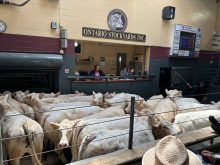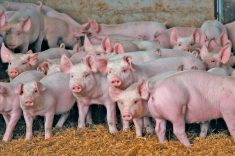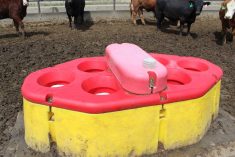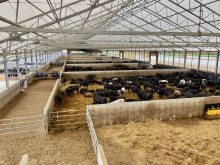The Ontario Corn Fed Beef program continues to expand, now accounting almost all of the branded beef exported from the province.
Why it matters: Branded beef programs continue to grow and the Ontario Corn Fed Beef (OCFB) program is now the most valuable branded beef program in Canada. In order for it to continue to grow, however, it must grow via exports.
Asia is the next frontier for OCFB, showing significant growth over the past year.
Ontario Corn Fed Beef is growing in China, where it started to sell product in 2017. In a year the business has been grown to $1.5 million worth of beef exported to China, with a focus in the Shanghai area.
Read Also

Dissolving eartags could make pig traceability easier
A dissolving eartag for market hogs, called Clean Trace could reduce processing challenges and enable more individual management of pigs.
“Chinese customers are very knowledgeable and enthusiastic about our beef,” says Mike Conlin, president of the Ontario Cattle Feeders Association, which created the OCFB program. Conlin farms north of Lucan, Ont.
Farmers who finish beef for the OCFB program must follow strict traceability and quality standards.
Japan also continues to be a growing market with 2017 volumes up 51 per cent over 2016. John Baker, who manages brand management and business development for the program, returned to Japan in January to talk to more potential new customers.
Most of the Corn Fed Beef program meat is sold through two large companies, Starzen International Group and Prima Meat Packers. They also have smaller, regional food companies they work with, such as Kinsho.
OCFB continues to grow at home in Ontario as well. In early 2018, AA beef will be in 111 No-Frills stores, continuing the expansion of the product in the Loblaw chain. The program has also added more restaurant customers.
More beef was featured in supermarkets in 2017, which meant loss leaders where AAA beef sirloin was priced at $6.99.
“That really helped drive the demand overall. When price is right, consumers step in and buy. It’s the choice they want,” says Jim Clark, executive director of the Ontario Cattle Feeders Association and the OCFB program.
Long term profitability will also have an effect on how much beef the program can supply the markets that want it. There’s been a consistent lower price in Ontario for finished beef and that’s been in place for three years.
Top quality beef is in high demand. Known at the Platinum program, it represents three per cent of the beef produced for the program and “we can’t get enough of it,” says Clark.
Carcass weights also continue to rise. Carcasses are 20 per cent heavier than 30 years ago and 10 per cent heavier than 15 years ago, says Clark, who added that it might be time to look at the genetics of some of the cattle being used.













